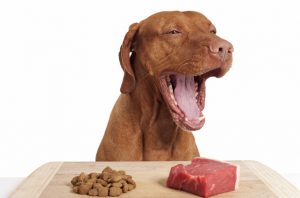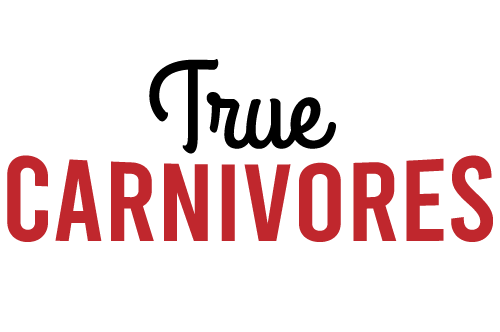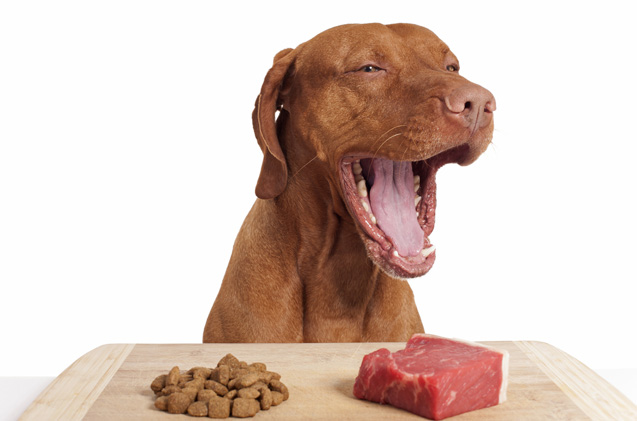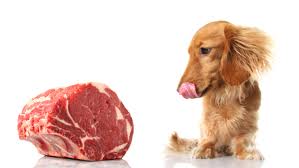Even if you don’t intend to make your own food, the tips and tricks you can read about here can help you make a tailored diet for your pets.
What is Homemade Raw Feeding?
Homemade Raw Feeding is a practice of feeding where the meals are tailor made by the pet’s owner to fit their dog or cat. This is a contrasting practice to buying an already balanced and mixed raw pet food product that has been produced by a raw pet food company.
There are several reasons why someone would want to make a homemade raw diet for their pets:
- You enjoy being able to put together a meal from scratch for your pets just as you might for your human companions!
- You can make your own superfood for your pets! By adding different ingredients that you believe your dog needs such as goats milk, kelp, tripe, organs, etc, you are making a superfood for them that can be better than any other commercial raw pet food out there!
- If your dog or cat has special dietary needs, it may be hard to find the right pet food for them on the market.
What to consider before making your own Raw Pet Food.

If you commit to making your own raw pet food, you will need the following:
- Larger time commitment – It’s not the usual order of thaw and serve anymore. You would be making your own mixture to store, then you would thaw and serve.
- You may need to purchase some things such as a food scale, grinder/blender, and Tupperware containers to store all the food you just made! Some prefer chopping the meat organ blend with a knife.
- For newly raw customers who recently switched over to raw from commercial kibble food, it may be an overwhelming task to make their own pet food.
- Homemade pet food makers may need to do considerable research on their own to decide what recipes to use. The source information varies wildly on various recipes and tips.
How to get started
- To get started, you need to get some meat! You can most likely find basic raw meat for pets at a reasonable price at your local pet food store that carries raw products. Other sources you could get meat from is grocery stores (although it may be expensive since they will only have expensive cuts of meat), butcher shops or meat specialty stores, or directly from slaughter houses.
- For a balanced diet, you also need organ meat and bones. You can shop around to see who has the best quality and value of organ meat and bones in your neighborhood. We are committed to assisting those who make their own pet food by providing an array of component ingredients such as veggies, tripe, organs and even simple proteins.
- Now for some vegetables or tripe! Although dogs and cats are carnivores, they still need to obtain nutrients that are abundant in vegetation or tripe.
- After the first three parts of a complete raw food has been established, you can choose to add other things that can help your dog such as flax seed or salmon oil, coconut oil, probiotics, etc.
Before you jump out of your seat to grab those ingredients to make your own super pet food, we have more tips for you!

What to watch out for
- Butcher Shops:
Although buying from butcher shops can be a very economical option, you must know and trust the butcher you are dealing with. Butchers will keep the better parts of meat for human consumption, use the medium grade for sausages and other ground meat products, and the remaining low grade meats, trims, discards will be used for the “for pets” products. I myself once thought I hit the jackpot when I found my butcher selling me beef dog food for .99 cents a pound but later discovered that it was only full of fat and organs. A high fat and organ content with little muscle meat is a very unhealthy diet for dogs.
Reputable butcher shops that also deal with pet food will use only the higher grades for their pet food mixtures and the trick is to find which ones are reputable and which ones know a proper ratio of ingredients. You can often question them about what parts are used for the “for pet” products and if their answer is not clear, it is best to steer clear. The mentality of a raw pet food manufacturer who happens to be a butcher compared to a butcher who wants to sell raw pet food to increase revenue is very different. - Overly Low Priced Meats:
Everyone likes a deal but there is such a thing as “too low priced”. Keep in mind that the price of live cattle was $ 1.51 per pound in February of 2015. This is the price for the whole animal, not yet processed, and when you are buying herds at a time. If the raw meats you are buying for your pet is close to the price of the going rate for live cattle, you should pause and think how it could be so low priced.
Basic ratios of ingredients
Every raw pet food has four parts to it:
- Meat: The meat is the basic component of course, since dogs and cats are carnivores. For dogs we recommend 75% to 90% of the mixture and a higher percentage for cats, from 80% to 90%. We recommend switching the meat to different animal proteins often to make sure your pet is getting a wide spectrum of nutrients and to prevent food sensitivities.
- Organs: Organs are rich with nutrients such as vitamins and minerals and taurine for cats. Dogs should have 5% to 15% organs and Cats should have 10% to 20%.
- Bones: Bones provide calcium and phosphorus. You can feed whole bones separately from the meats or there are options such as ground bone or ground eggshell. Bones should consist of about 5% of the diet or higher.
- Veggies or Tripe: These two ingredients provide vitamins and minerals but also digestive enzymes in the case of tripe. Some mixtures use up to 25% vegetables but that is about the maximum we would recommend. We also recommend minimizing the use of root vegetables such as potatoes, yams, carrots, etc. They have a high glycemic index and releases sugar more quickly than proteins and fats and this is not healthy for carnivores like dogs and cats on a continuous basis.

Tailoring the diet for your pet
There are many varying philosophies out there in the world about how to properly balance a raw food diet. The truth is, there is no one right answer but many and it’s up to you to find out. No one knows your dog or cat better than you do, but we have some tips on getting to know your dog even better.
Check their stool! What is ideal is a stool that is not too hard or soft, and can be picked up easily without it falling apart.
- If the stool is too loose, soft, or wet, this means you could do with a little more bone in the diet or less organs.
- If the stool is too hard, chalky, or powder-like, this means you could do a little less bone or more organs.
- If your pet is having diarrhea or is constipated, we recommend adding pumpkin or tripe. Pumpkin can provide fiber that helps normalize their digestion and Tripe is loaded with digestive enzymes that will support a healthy gut flora for better digestion and absorption.
You must also keep an eye on their weight gain or weight loss. For starters, you can use our feeding calculator – but our calculator and any other methods you may find online are only guidelines. Every dog and cat is different, just like people are. The best way to gauge whether you are feeding the right amount is by monitoring their weight, and never by how ‘hungry’ your pet acts.
Other things to add to make it a Superfood!
Meat, organs, bone, and veggies or tripe is the four main building blocks but you can do even better! Here is a list of examples of things you can add to make your homemade meal for your pets:
- Coconut oil – great for skin and coat, cleaning teeth, antioxidants, and essential fatty acids
- Flax seed oil – helps skin and coat health, anti-inflammation, slowing down yeast infections, immune system, eye health, and heart health.
- Cranberry Powder – to provide vitamins and help in preventing urinary tract infections.
- Kelp and Minerals -Kelp naturally contains a full spectrum of chelated macro and micro minerals, and vitamins & amino-acids. They are also great for bad breath and preventing pancreatic deficiencies. Fulvic and Humic Acid is another powerful way to obtain minerals.
- Raw Goat’s Milk – A great alternative to tripe. Goat’s milk is full of probiotics and digestive enzymes.
- Multi Vitamins – There are many great products on the market today for dogs and cats. Look for plant based or non synthesized vitamins.
- Variety – The best way to make sure you are feeding your pet well is to feed a variety, just like for us humans! Mix up the proteins by categories such as hooves, games and exotics, fish, poultry, and mix up the vegetables as well!

As always, please feel free to ask us by email or phone if you have any other questions or better yet, come visit us in store!
Thank you for reading,
-The True Carnivores Pack





